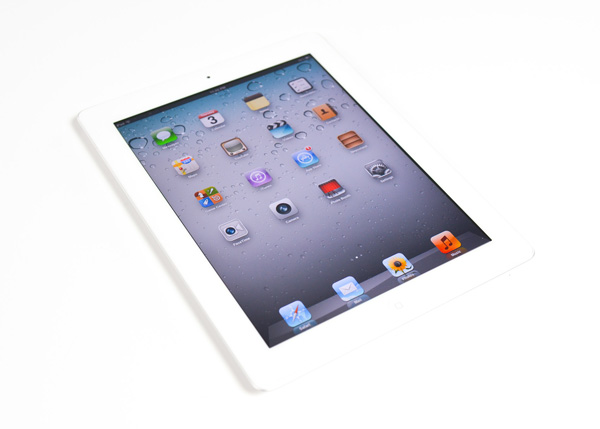The iPad 2,4 Review: 32nm Brings Better Battery Life
by Anand Lal Shimpi on May 4, 2012 12:50 AM ESTFinal Words
If Apple's A5 is any indication, Samsung's 32nm HK+MG process is extremely capable. Assuming Apple didn't change any fundamentals of its microarchitecture, the iPad 2,4's gains in battery life can be attributed directly to the process. The gains themselves are significant. We measured a 15% increase in our web browsing battery life, a nearly 30% increase in gaming battery life and an 18% increase in video playback battery life. Although Apple hasn't revised its battery life specs, the iPad 2,4 definitely lasts longer on a single charge than the original iPad 2.
If you're in the market for an iPad 2, the 2,4 is clearly the one to get - if you can find one that is. Unfortunately there's no sure fire way to tell that you're getting a 2,4 without opening the box and turning on the tablet, and I suspect most stores will get a bit irate if you're constantly buying and returning iPad 2s in search for a 32nm model. Presumably over time more of the available inventory will shift to 2,4 models, but based on our experiences in trying to find a 2,4 it's still pretty tough.
I would like to applaud Apple's 32nm migration plan. By starting with lower volume products and even then, only on a portion of the iPad 2s available on the market, Apple maintains a low profile and gets great experience with Samsung's 32nm HK+MG process. It's very clear that this is all in preparation for the next iPhone, which will almost certainly use Samsung's 32nm process and require it in significant volumes. It's obvious that Apple employs some very smart chip heads in Cupertino.
What I'd really like to see is a 32nm version of the A5X used in the new iPad. I don't know that there's much reason for that this year, especially when the 4th generation iPad will likely ship in the first half of 2013 with yet another new SoC (dual-core A15 + Rogue anyone?), but it'd still be nice to have. The power efficiency improvements are substantial and the 3rd gen iPad could definitely use them. Those of you who are waiting for the next iPhone should also be pretty happy about these results. Apple could easily deliver a higher clocked version of the A5 for the next iPhone while keeping power consumption equal to if not lower than where it's at today. The move to 32nm is going to be good all around it seems, and Samsung appears to be a very capable foundry partner for Apple. Despite all of the rumors of a rift in the relationship, the foundry side of things is working out well.











100 Comments
View All Comments
marioyohanes - Friday, May 4, 2012 - link
Unfortunately, if you bought iPad 2 after iCloud launched, you'll get iCloud logo on the box anyway. Late 2011 production to be exact. Since I have 2 different iPad 2, one I bought on April, and another one after 4S launched, the later has iCloud logo.Souka - Friday, May 4, 2012 - link
Did anyone by chance OPEN one of these new iPads and look at the battery?Is is the same as the "older" iPad2? Or possibly a slightly higher capacity?
I didn't see any mention in the article so it made me wonder, that's all.
:)
lolstebbo - Friday, May 4, 2012 - link
Ah. Odd, but makes sense.dasartis - Friday, May 4, 2012 - link
Does anyone know how to check to see what the version number is using a method other than geekbench? It's $0.99 in the app store, and I wouldn't use it for anything other than the version check.frederickd - Friday, May 4, 2012 - link
I just used Battery Life Pro to find out my iPad is a 2,4. Battery Life Pro is free and has a button with the picture of a computer chip on it. Touch that and then go to System Info and you have the informaiton. Hope this helps.Dutchdaun - Monday, October 15, 2012 - link
Go to the Settings icon, General, Info, Diagnosis and Usage, Dianosis and Usage, and open one of the .plist files. In the second or third line is the model number. Be awere, I translated the menu items from the Dutch language so the menu items could be labeled otherwise in English.iwod - Friday, May 4, 2012 - link
Any reason why Apple would want to use TSMC instead? I am guessing the cost of the new A5R is roughly the same because the Wafer cost is much higher and you get less yield.CoreDuo - Friday, May 4, 2012 - link
Because these days Samsung isn't only their supplier, but they're a main competitor as well.dagamer34 - Friday, May 4, 2012 - link
For Apple, that's a silly reason, since they make far more money off of selling their products than they would ever get from patents and Samsung is a rock solid supplier going as far back as the original iPhone.They may want some diversity, but because Samsung and Apple actually need each other, they aren't going to stupidly turn down each other's business. Note that while their lawyers might fight, shareholders would NOT be happy with the amount of lost business/production of product.
medi01 - Friday, May 4, 2012 - link
Which "money from patents" are you talking about, my dear?Apple didn't try to get money for it's "patents" (getting payed for "rectangular shape with rounded corners" would be hilarious, though), they've "merely" went "thermonuclear" (c) Hypnosteve to STOP Samsung's product altogether.
And they, in fact, succeded in doing it in Germany, thanks to the reasonable judge, Johanna Brueckner-Hofmann. Now Germans get "N" version of 10.1, with silly looking ears. (no ears design is patented, you know)